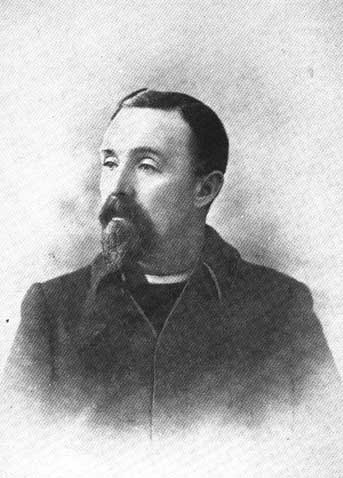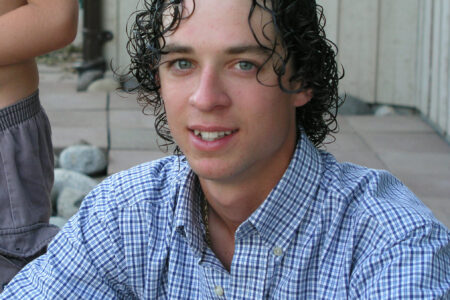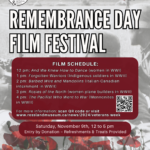Tales & Legends of the Mountain Kingdom: The love and death of Father Pat
There are so many legendary personalities and characters in Rossland’s early history: it’s an amateur historian’s delight. A lot of the information makes great reading, especially when you get to fill in the blanks with your own imagination. One person who certainly deserves the title of “legend” in these parts is Rossland’s first clergyman, Father Pat.
Indeed, there was a book written about him back in 1909, called Father Pat: A Hero of the Far West, written by a Mrs. Jerome Mercier. It’s a treasure trove of information on Father Pat, though the woman who wrote it seems to have taken some liberties with the tone of certain parts to ‘up’ the romantic ante. It makes for a great read, though, and I think it indicates the fondness people who knew Father Pat in real life felt for him.
When I attended last year’s Gold Fever Follies, Father Pat was one of the main characters, and the story included some of the details of Father Pat’s character that made him so legendary. In reading more about him, there are a few things that strike me as fascinating about this man, but they are too numerous to write about here, so I’ve chosen to focus on two romantic ideals of the time: love and death.
Father Pat had one great love that changed his life forever, and an ironic death that leaves me feeling cold to the bone.
But first, a bit of background. Born in the Wicklow Mountains of Ireland on August 2, 1859, Father Pat was given the birth name of Henry Irwin, and he was destined to become a fourth generation Church of England clergyman. His father was a vicar, his grandfather rose quite high in church ranks as chaplain and secretary to the Primate (the head of the Church of England), Archbishop Beresford. Father Pat’s great grandfather was an archdeacon. It seemed that the priesthood was in his blood.
From an early age, Henry Irwin declared that he wanted to be a missionary, and from all accounts he was a the ideal child: sweet, good-natured, and a lover of animals. He played well with others, was always willing to share his toys, and never pouted after being punished. He showed an early interest for horses and horseback riding, and, indeed, became well known for trotting around the countryside on his pony, an activity that would give him good practice and serve him very well in his future endeavours as a missionary in the rough and tumble boonies of early British Columbia.
Young Henry received an excellent education and eventually ended up at Oxford University, studying at Keble College, and this is where he earned the nickname “Father Pat.” Before that, he attended a boys’ school in Dublin called St. Columba’s. The principal said of Henry later on, “From the first, Henry showed high and strong principle, ever ready with his work, ever near the front in the playfield, ever attentive and devout in chapel. These traits became more distinct as he grew. I recall him vividly as the captain of games, as a most useful Prefect, enthusiastic in everything that came in his way, conscientious in his superintendence of meals in Hall, of Dormitory rules, of chapel processions; always taking the right line, as if by instinct, in matters of discipline, such as bullying and protection of the weak, and in matters of moral tone.”
The only marginally negative thing said about Henry was that, although he was a good learner, he was “not able to reach the highest rank in scholarship.” It was during his time here that Henry not only reiterated his desire to be a missionary, but also specified that he wanted to do this work in a colder climate. Whether or not young Henry had been traumatized by a freak Irish heat wave early on in his life or somehow come to idealize the tales of Arctic explorers and wanted to experience some extreme weather conditions for himself, is not known – and at this stage never will be.
At Oxford, the newly monikered Father Pat joined a missionary association and mentioned to someone in a letter that he was interested in either South Africa or Newfoundland. Apparently inspired by other missionaries’ accounts of their travels to exotic lands, the work seemed to appeal to Henry’s sense of adventure.
Finally, in 1885, his dream came true, and embarked upon the adventure of a lifetime, arriving in the exotic locale of Kamloops, which was at that point a part of the broad diocese of New Westminster and Kootenay.
And so began his missionary work. Father Pat was famous for riding everywhere on horseback, trotting hither and yon–sometimes bareback–ministering to CPR workers, miners, and the First Nations people of the area. He preached in houses, courthouses, on ranches, in tents – you name it.
And while in Kamloops, Father Pat met the woman who was to become the love of his life.
Frances Innes, according to Mrs. Mercier’s book, “was one of those gentle, timid creatures who appeal most powerfully to a brave man’s heart by their essential womanliness.” Apparently pretty, but not overly so, and by some accounts painfully shy, Frances met Father Pat through church connections. Her sister was married to the rector of the cathedral in New Westminster and the couple eventually moved to Kamloops to become a senior assistant priest in the Kamloops district. Frances came out from Victoria, where her father had a naval post.
When Frances and Father Pat met, there was an instant connection, “a complete and perfect union of hearts” as Mrs. Mercier puts it. Alas, Father Pat’s itinerant job and Frances’s living in Victoria produced some complications in keeping the romance alive, but keep it alive they did, through much letter-writing, and four years after they met, they married on January 8, 1890. They moved to New Westminster, where they set up a house on the banks of the Fraser River. Remarking on the couple’s happiness, Frances’s sister said, “The husband and wife were devoted to each other.” Father Pat took up a curacy there, settling down a bit after being on the road so much over the past years.
Accounts tell of how Father Pat’s devotion to his wife caused him to change his missionary goals in life, and of how intensely he loved Frances. However, it was to be a tragically short marriage: Frances gave birth to a stillborn baby in the first week of November, 1890, and three days later she herself died.
Father Pat never remarried.
A friend stated, “”All who knew him in New Westminster knew also his intense devotion to his wife, a devotion that remained unchanged till his death.”
The death of Father Pat is a strange story indeed. After years of ministering all through the Kootenays, including the Boundary area and all the way over to Fort Steele, and famously being the first clergyman in Rossland (where his generosity knew no bounds and endeared him to everyone in town) Father Pat found himself burnt out. He was living so sparsely in a dying mining camp near Penticton that his bishop ordered him to take a vacation to his homeland in 1900. It took a lot of convincing, however, and Pat didn’t depart until late 1901.
No one knows exactly what happened, though Mrs. Mercier speculates that “the fine gold of his mind was become dim, and that there was a partial clouding of the intellect.” In Montreal, Father Pat decided to go for an evening walk in the countryside. “He seems to have lain down under the stars, half unconscious, and thus the bitter cold did its sad work.”
No one knows how long he lay there, but he was eventually found by a farmer who transported the half-frozen Father to Notre Dame Hospital in Montreal, where for some reason Pat either could not or would not tell anyone his real name, instead calling himself William Irwin. The nurses had to cut his boots from his feet, but “mortification had already set in.”
By the third day of his stay, and still not giving out his real name, Father Pat’s “throat became affected; there was difficulty in swallowing and in articulation,” and then the delirium set in. And then he quietly died. He was 43 years old.
Sometime during Pat’s three days in the hospital, the staff figured out this was a clergyman of the Church of England, and in the end someone figured out who he was because his remains were sent back to New Westminster, where they were laid to rest alongside those of his wife and child.
Ironically, Henry Irwin’s childhood desire to minister in a cold country eventually killed him in a very cold way. One of the stories often told in Rossland about him was that he was always giving away his coats, even brand new coats that people had given to him to replace threadbare ones, to the cold and less fortunate in town. Many tried very hard to save Father Pat in Montreal, but it was too late for him. In his case, death was the coat that brought him comfort after one very full, very adventure-filled life.
You can read Mrs. Mercier’s entire work on Father Pat here

























